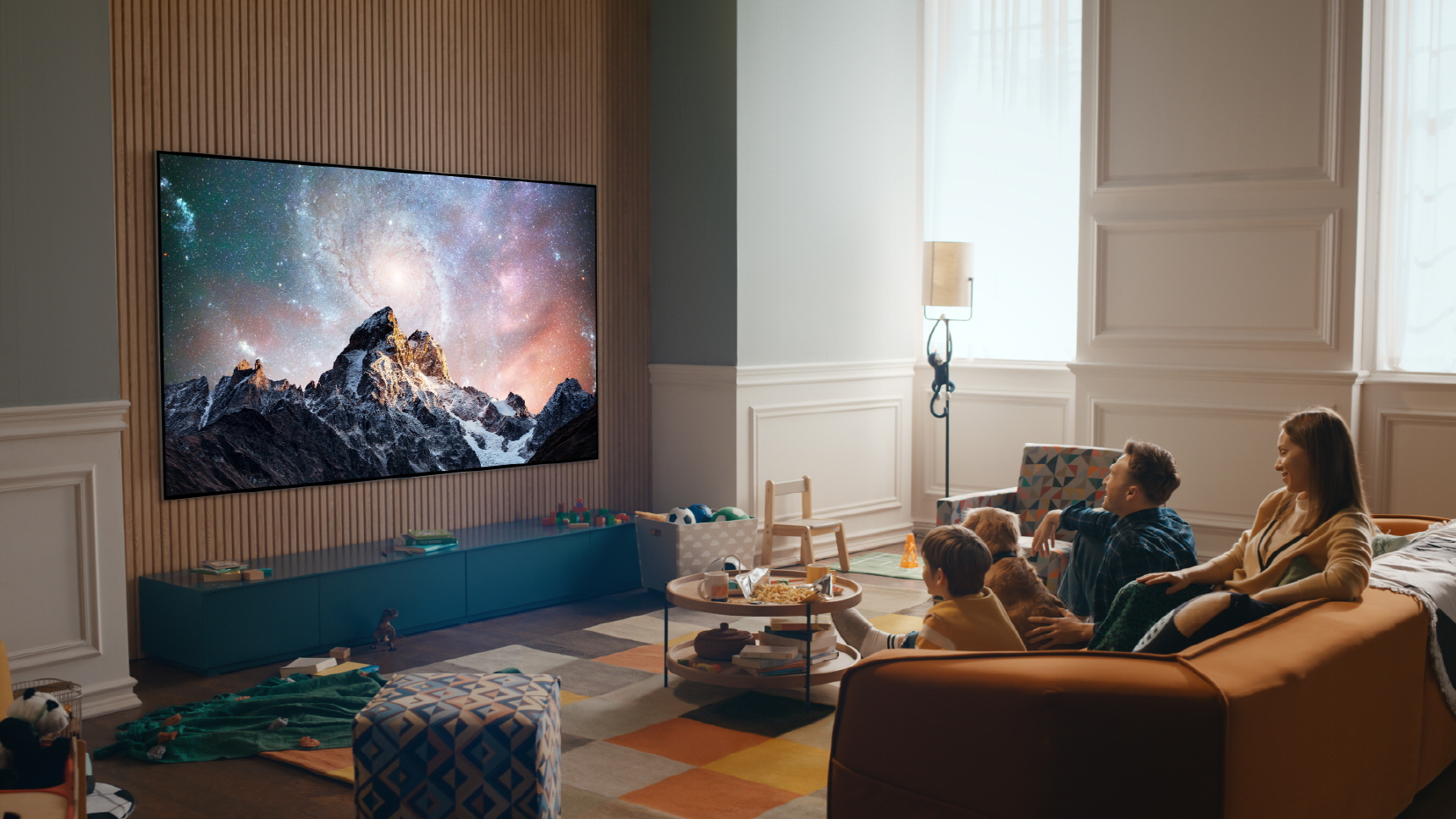

LG OLED TVs across the board are excellent – they dominate our list of the best LG TVs for good reason. The way every pixel in the best OLED TVs can produce its own light and colour consistently gives us beautifully dynamic, precise and cinematic pictures, and LG has a rich history of partnering OLED’s innate talents with powerful picture processing, exceptional calibration flexibility, and in recent years, advanced gaming features.
Even the finest TVs, though, can be compromised by dodgy settings. So to ensure this doesn’t happen to you, here’s our guide to the most common ‘user errors’ LG OLED TV owners tend to make.
1. Using the Vivid picture preset
Understandably, many LG OLED buyers want to feel like they’re getting the maximum picture quality bang for their buck when they get their expensive new TV home. As a result the temptation to switch to its Vivid picture preset, which ramps up colour saturations, brightness and contrast to the outer reaches of what the screen is capable of, is hard to resist.
We strongly recommend that you do resist it, though. For starters, the Vivid mode’s aggressiveness puts pressure on OLED’s organic elements, potentially wearing them out faster over the long term. Also, though, it makes the picture look seriously unnatural.
We’re not saying everyone should have their TV professionally calibrated to produce 100% ‘accurate’ pictures, but the Vivid mode pushes colours and contrast so hard that the balance between different picture elements is lost, and the image can actually become quite tiring to watch.
The Standard preset is a much more refined and balanced option for regular day to day viewing. But see also point two…
2. Sticking with one picture preset for all viewing
Research shows that the vast majority of people never touch their picture settings once they’ve finished initial set up. Even though it’s pretty self-evident that the best settings for watching, say, a 30 frames per second sports broadcast will not be the same as the best settings for watching a 24 frames a second film.
Get all the latest news, reviews, deals and buying guides on gorgeous tech, home and active products from the T3 experts
LG OLED TVs do a good job of trying to simplify this for you by providing a series of themed presets you can toggle between, rather than you having to keep making in-depth adjustments. The ‘Standard’ setting will work well with most day to day TV viewing, while the Cinema Home option is excellent for movie viewing. Or, if you want a really accurate setting for dark room viewing, the Cinema or Filmmaker Modes are both good at offering that. Though we suspect some users will find these last two options a little ‘flat’ for their tastes.
One last critical point to add here is to make sure you switch your LG OLED TV into its Game mode when gaming if you want the TV to improve your performance by producing images received from your console or PC as fast as possible.
3. Not experimenting with default motion settings
You may have seen video messages from the likes of Tom Cruise and Denis Villeneuve recently telling you to turn off motion processing on your TV. While we don’t think the situation is quite as clear cut as that, it is true that sticking with the default ‘TruMotion’ settings on LG TVs is typically a mistake. Especially when you’re watching films.
We’d advise either following film industry advice and simply turning TruMotion off or, if that leaves the picture looking too juddery for your tastes, either trying the Cinematic Movement motion system available on the past couple of LG OLED generations, or choosing the ‘Custom’ TruMotion option and setting both the judder and blur reduction components to around a third of their full power.
4. Not turning off Energy Saving mode
While the Energy Saving mode on LG TVs can deliver small power consumption benefits, it also negatively impact picture quality by reducing brightness levels automatically in response to ambient light levels. So if you want the most consistent performance from your TV, we’d suggest turning this mode off – but we understand if you do want to save power where possible these days.
5. Sticking with the Dolby Atmos sound setting
All of LG’s OLED TVs for years now have carried built-in Dolby Atmos sound decoding. However, for the last three or four years, at least, the default Dolby Atmos On setting hasn’t actually given the best audio results if you're listening through the TV's built-in speakers.
Although the latest G2 and C2 models improved their Dolby Atmos performance considerably, we've found consistently in other models that LG’s OLED TVs actually produce a much fuller, more powerful, more direct and more immersive sound if you turn Dolby Atmos off, and instead call in LG’s AI Sound mode, which reworks any sound it receives to take fuller advantage of the known speaker capabilities of each LG OLED TV.
Of course, if you're using a Dolby Atmos soundbar or speaker system, you should stick with the Atmos setting – but if not, you could give yourself an instant upgrade.
John Archer has been testing TVs and AV gear for over 25 years, having worked on Home Cinema Choice magazine. He's a contributor to Forbes, TechRadar, Trusted Reviews, Wired and many more places – if you've owned a TV in the last couple of decades, John's probably reviewed it somewhere. He's seen so many hot new technologies come and go, like tears in the rain.
